- Choose the Right Variety
- Provide Proper Nutrition
- Ensure Adequate Water Supply
- Optimize Pollination
- Control Pests and Diseases
- Pest Control
- Disease Control
- Regular Monitoring
- Conclusion
- Manipulate Light and Temperature
- 1. Provide Adequate Light
- 2. Control Temperature
- 3. Use Reflective Mulch
- 4. Provide Shade during Hot Weather
- 5. Use Heat-Resistant Varieties
- 6. Maintain Consistent Moisture
- 7. Provide Adequate Air Circulation
- 8. Hand Pollination
- Prune and Train Cucumber Plants
- 1. Remove Excess Foliage
- 2. Train the Main Stem
- 3. Support the Side Shoots
- 4. Maintain Proper Spacing
- 5. Water and Fertilize Appropriately
- Harvest Cucumbers at the Right Time
- 1. Size matters
- 2. Color clues
- 3. Firmness test
- 4. Harvest frequency
- 5. Use sharp scissors or pruners
- 6. Cool storage
- “Question-Answer”
- “Video” How? When? Why? Prune Cucumbers High Yields Maximum Production Small Spaces… Simple and Easy
When it comes to growing cucumbers, having a high fruit set and an extended fruiting season can greatly enhance your harvest. Whether you are a beginner or an experienced gardener, these tips will help you maximize the yield of your cucumber plants.
1. Provide Sufficient Pollination: Cucumbers require pollination for fruit setting. Bees are the primary pollinators of cucumber plants, so ensure that your garden has an adequate population of bees. To attract bees, plant flowers that are rich in nectar and pollen nearby, such as marigolds or lavender. Alternatively, you can hand-pollinate the flowers using a small brush or Q-tip.
2. Optimize Growing Conditions: Cucumbers thrive in warm and sunny environments. Plant your cucumber seeds or seedlings in an area that receives at least 6 to 8 hours of direct sunlight daily. Ensure the soil is well-drained and rich in organic matter. Regularly check the soil moisture levels and water your cucumber plants deeply when the top inch of soil feels dry.
3. Prune and Support the Plants: To encourage better air circulation and sunlight penetration, prune the cucumber plants by removing the lateral shoots and any damaged or diseased leaves. Additionally, provide support for the plants by installing trellises, stakes, or cages. This will prevent the fruits from touching the ground, reducing the risk of rot and pests.
4. Apply Balanced Fertilizer: Cucumber plants require a balanced fertilizer to support healthy growth and fruit development. Use a fertilizer with equal proportions of nitrogen, phosphorus, and potassium. Apply the fertilizer according to the package instructions, usually every 2 to 3 weeks during the growing season.
5. Manage Pests and Diseases: Regularly inspect your cucumber plants for any signs of pests or diseases. Common cucumber pests include aphids, cucumber beetles, and spider mites. Treat infestations promptly with organic insecticides or insecticidal soap. Additionally, practice proper crop rotation and remove any infected plants to prevent the spread of diseases.
By following these tips, you can increase fruit setting on your cucumber plants and extend the fruiting season until the first frost. Enjoy a bountiful harvest of crisp, delicious cucumbers to enjoy in salads, sandwiches, and pickles.
Choose the Right Variety
When it comes to increasing fruit setting on cucumbers and extending the fruiting season until frost, choosing the right variety is crucial. Different cucumber varieties have different growth habits, disease resistance, and fruiting patterns. Here are some factors to consider when selecting a cucumber variety:
- Growth habit: Determine whether you want a vining (indeterminate) or bush (determinate) cucumber variety. Vining varieties can produce a larger yield but require more space and trellising for support.
- Days to maturity: Check the days to maturity listed on the seed packet or plant tag. Typically, early-maturing varieties are preferred for extending the fruiting season.
- Disease resistance: Look for cucumber varieties that are resistant to common diseases in your area. Resistant varieties can help prevent yield loss due to diseases, resulting in a longer fruiting season.
- Fruiting pattern: Some cucumber varieties produce a single crop, while others have an extended harvest period. Choose a variety that suits your desired fruiting pattern, whether it’s a continuous harvest or a larger yield all at once.
- Taste and texture: Consider the flavor and texture preferences of the cucumbers you want to grow. Some varieties are more suitable for pickling, while others are better for slicing.
By selecting the right cucumber variety for your needs, you can increase fruit setting and extend the fruiting season until the first frost. Don’t be afraid to experiment with different varieties to find the ones that work best for your growing conditions and preferences.
Provide Proper Nutrition
One of the key factors in increasing fruit setting on cucumbers and extending the fruiting season is providing proper nutrition to the plants. Cucumbers are heavy feeders and require a nutrient-rich soil to thrive and produce a bountiful harvest. Here are some tips for providing the right nutrition to your cucumber plants:
- Use organic matter: Incorporate well-rotted compost or aged manure into the soil before planting your cucumbers. This will enrich the soil with organic matter and provide a steady release of nutrients throughout the growing season.
- Apply balanced fertilizer: Use a balanced fertilizer with equal amounts of nitrogen, phosphorus, and potassium (NPK) to ensure your cucumber plants receive the necessary nutrients. Apply the fertilizer according to the manufacturer’s instructions and avoid over-fertilization, which can lead to excessive foliage growth at the expense of fruit production.
- Monitor nutrient levels: Regularly test the soil to assess its nutrient levels and adjust the fertilization accordingly. This will help you identify any deficiencies or excesses and make necessary amendments to maintain a balanced nutrient profile.
- Consider foliar feeding: In addition to soil application, foliar feeding can provide a quick boost of nutrients directly to the leaves. Use a foliar spray containing a balanced micronutrient mix and apply it in the early morning or late evening to avoid leaf burn.
By providing proper nutrition to your cucumber plants, you can ensure they have the necessary nutrients to set fruit and continue fruiting until frost. Remember to follow the instructions on fertilizers and monitor the nutrient levels to maintain a healthy and fruitful cucumber crop.
Ensure Adequate Water Supply
Water is essential for cucumbers to grow and develop properly. Ensuring an adequate water supply is crucial for fruit setting and extending the fruiting season until frost. Here are some tips to ensure your cucumbers have enough water:
- Consistent watering: Cucumbers require consistent and even moisture throughout the growing season. Water deeply and thoroughly to ensure the entire root zone is moist.
- Drip irrigation: Consider using drip irrigation to provide a steady supply of water directly to the cucumber plants’ root zone. This helps prevent water loss through evaporation and keeps the foliage dry, reducing the risk of diseases.
- Mulching: Apply a layer of organic mulch around the cucumber plants to help retain soil moisture. Mulch also helps to regulate soil temperature, suppress weeds, and prevent soil erosion.
- Avoid overwatering: While cucumbers need adequate water, it’s important not to overwater them. Overwatering can lead to waterlogged soil, which can suffocate the roots and promote the development of diseases.
By ensuring an adequate water supply, you can help your cucumber plants produce healthy fruit and extend the fruiting season until the first frost arrives.
Optimize Pollination
Pollination is a crucial step in the cucumber fruiting process. Optimizing pollination can help increase fruit setting and extend the fruiting season until frost. Here are some tips to improve pollination:
- Attract pollinators: Bees and other pollinators play a key role in cucumber pollination. Planting flowers nearby, such as marigolds or zinnias, can help attract these helpful insects to your garden.
- Provide a water source: Pollinators need water to survive, so providing a shallow water source, such as a birdbath or shallow dish, can help attract them to your garden.
- Plant in groups: Planting cucumbers in groups or clusters can increase pollinator activity. Bees are more likely to visit a cluster of flowers in one area, leading to better pollination.
- Use hand pollination: If pollinator activity is low in your area, you can hand pollinate cucumber flowers. Simply use a small brush or cotton swab to transfer pollen from the male flowers to the female flowers.
- Avoid pesticide use: Pesticides can be harmful to pollinators and may reduce their populations. If possible, use organic pest control methods or opt for natural alternatives to protect your cucumbers without harming pollinators.
By optimizing pollination in your cucumber garden, you can increase fruit setting and prolong the fruiting season until frost. These simple tips can help improve pollinator activity and ensure a bountiful cucumber harvest.
Control Pests and Diseases
Pests and diseases can significantly reduce cucumber fruit setting and overall plant health. Taking measures to control pests and diseases can help increase fruit yield and extend the fruiting season until frost. Here are some tips to manage common pests and diseases:
Pest Control
- Use physical barriers: Install row covers or netting to prevent pests like cucumber beetles from reaching the plants.
- Handpick pests: Regularly inspect the plants and manually remove any pests you come across.
- Apply organic insecticides: Use insecticidal soaps or natural products like neem oil to control common cucumber pests.
- Encourage natural predators: Attract beneficial insects like ladybugs and lacewings to the garden to feed on cucumber pests.
Disease Control
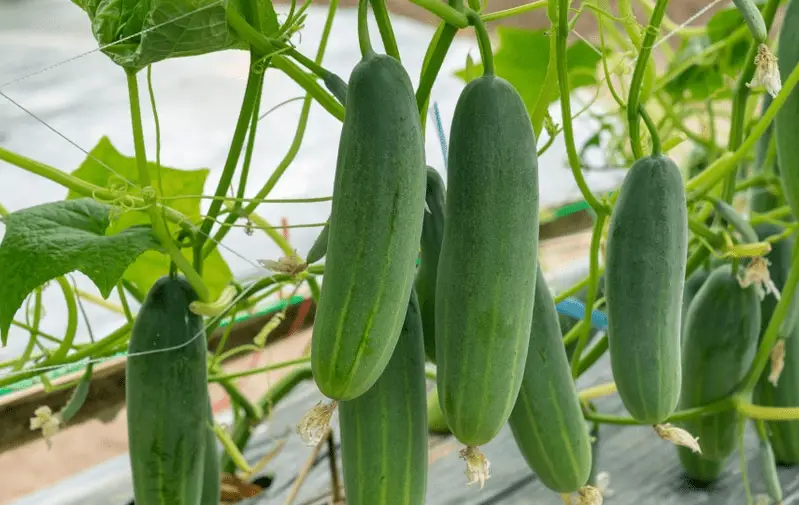
- Plant disease-resistant varieties: Choose cucumber varieties that are resistant to common diseases like powdery mildew.
- Practice crop rotation: Avoid planting cucumbers in the same location year after year to reduce the buildup of soil-borne diseases.
- Provide good air circulation: Space cucumber plants adequately and prune excess foliage to promote airflow and reduce disease risk.
- Apply fungicides: Use organic fungicides to control fungal diseases like downy mildew, if necessary.
Regular Monitoring
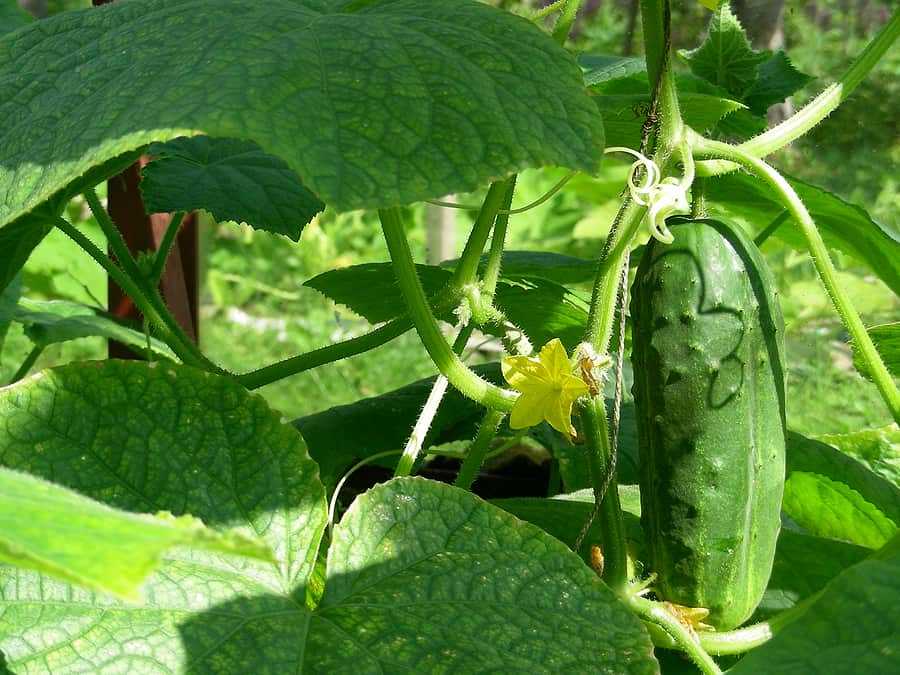
Regularly monitor the cucumber plants for any signs of pest or disease infestations. Early detection and prompt action can help prevent the spread of pests and diseases, ensuring a better fruit set and longer fruiting season. Remove any infected plants or parts immediately to prevent further damage.
Conclusion
By implementing these pest and disease control measures, you can increase fruit setting on cucumbers and prolong the fruiting season until the first frost. Remember to maintain good garden hygiene, follow proper watering and fertilization practices, and remove any stressed or diseased plants to promote healthy cucumber growth.
Manipulate Light and Temperature
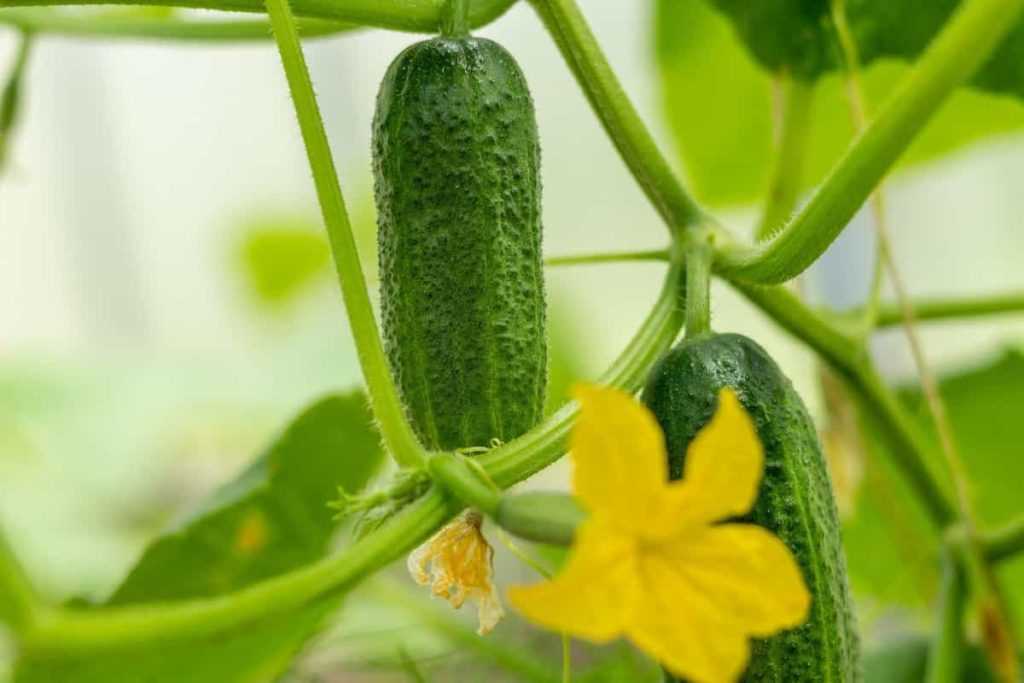
1. Provide Adequate Light
Cucumbers require plenty of light to thrive and produce fruit. Make sure to place them in a location where they can receive at least 6-8 hours of direct sunlight each day. If growing cucumbers indoors, use grow lights to supplement lighting and ensure they get the required amount of light.
2. Control Temperature
Cucumbers prefer warmer temperatures for successful fruit set. Avoid planting them outdoors too early in the season when temperatures are still cool. Use protective coverings such as row covers or cloches to create a warmer microclimate around the plants. If growing indoors, maintain the temperature between 70-85°F (21-29°C) for optimal fruiting.
3. Use Reflective Mulch
Reflective mulch can help increase light levels by bouncing sunlight onto the cucumber plants. Use aluminum foil or reflective plastic mulch around the base of the plants, creating a reflective surface that redirects light towards the lower parts of the plants.
4. Provide Shade during Hot Weather
Excessive heat can negatively affect cucumber fruiting. Provide shade during extremely hot days to prevent stress and sunburn on the plants. Use shade cloths or row covers to create a temporary shade structure and protect the plants from intense sunlight.
5. Use Heat-Resistant Varieties
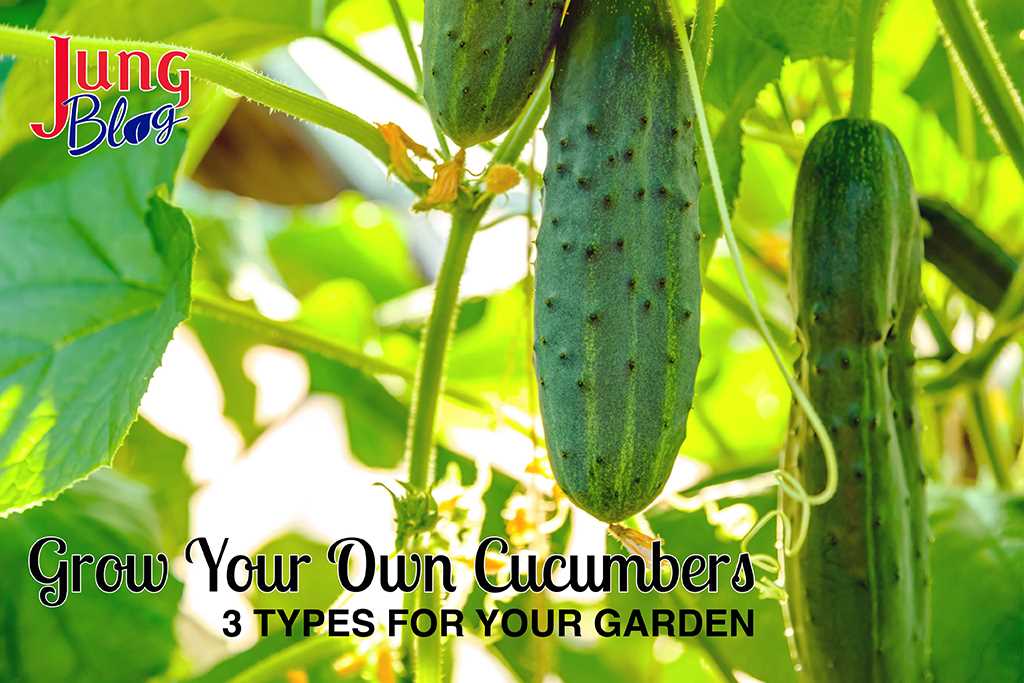
Choose cucumber varieties that are heat-resistant and can tolerate higher temperatures. These varieties are better suited for fruiting in hot weather and can withstand the stress associated with high temperatures, resulting in increased fruit set.
6. Maintain Consistent Moisture
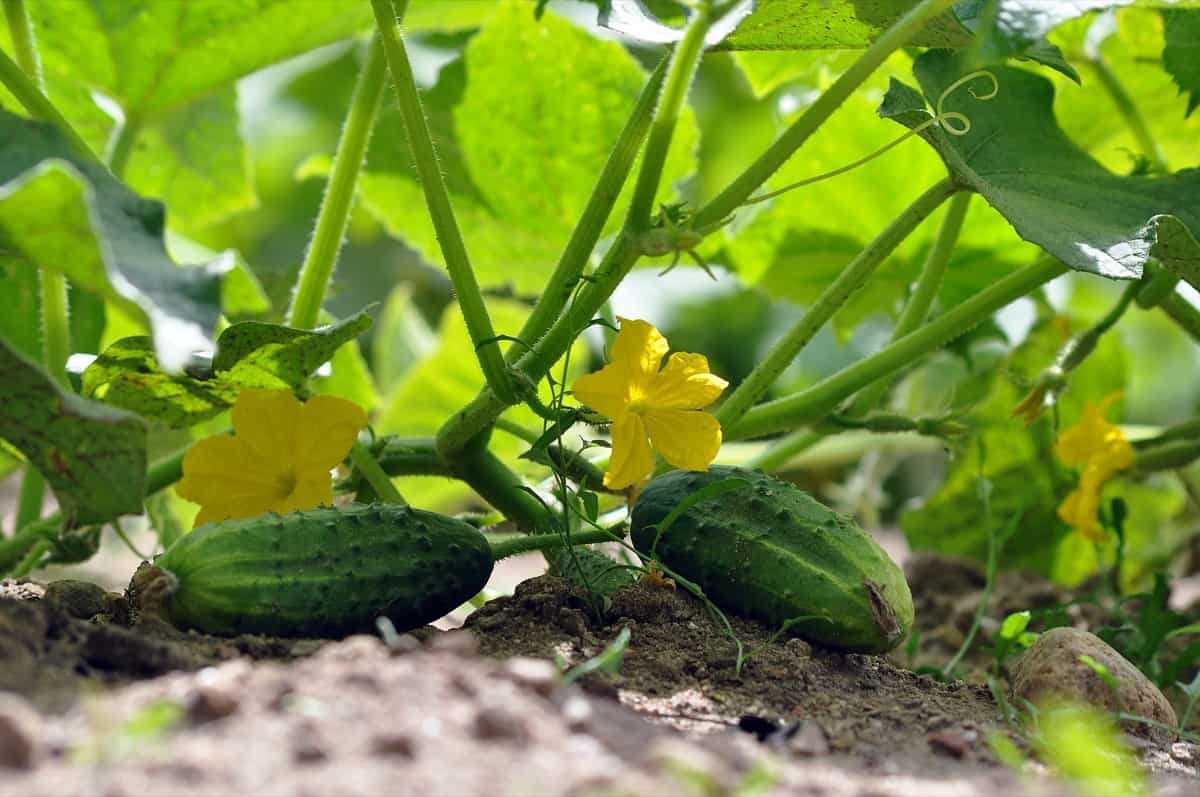
Proper watering is essential for cucumber fruit set. Keep the soil consistently moist, but not waterlogged. Inconsistent watering can lead to poor fruit development and blossom drop. Use mulch to help retain soil moisture and reduce evaporation.
7. Provide Adequate Air Circulation
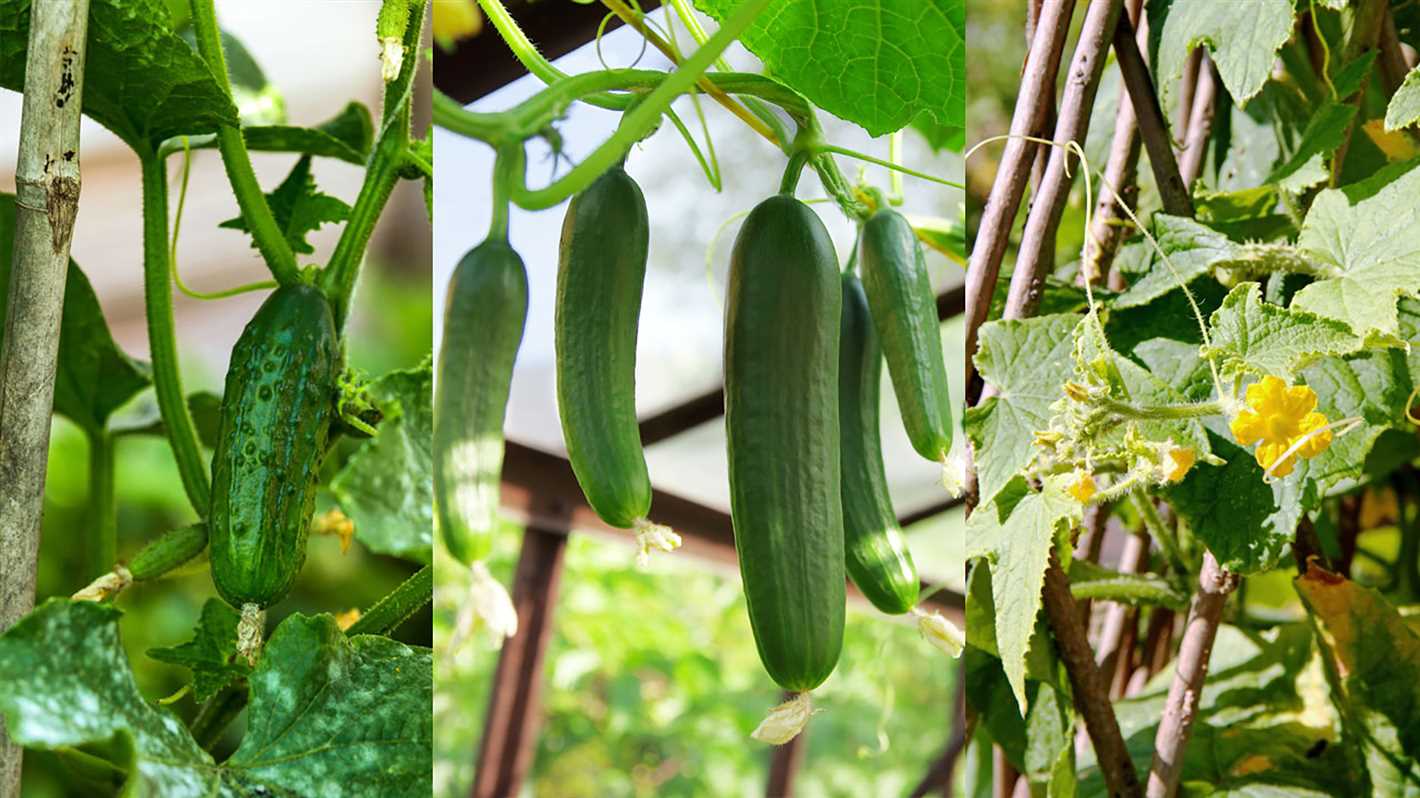
Good air circulation is crucial for healthy cucumber plants. Proper airflow helps pollination and prevents the development of fungal diseases that can hinder fruit set. Avoid overcrowding plants and ensure they have enough space for air to circulate freely.
8. Hand Pollination
In cases where natural pollination may be limited, you can hand-pollinate cucumber flowers to ensure fruit set. Gently transfer pollen from the male flowers to the female flowers using a small brush or cotton swab. This will increase the chances of successful pollination and fruit development.
Prune and Train Cucumber Plants
Pruning and training cucumber plants can help increase fruit setting and extend the fruiting season until frost. By removing excess foliage and guiding the growth of the plant, you can improve air circulation, sunlight exposure, and overall plant health.
1. Remove Excess Foliage
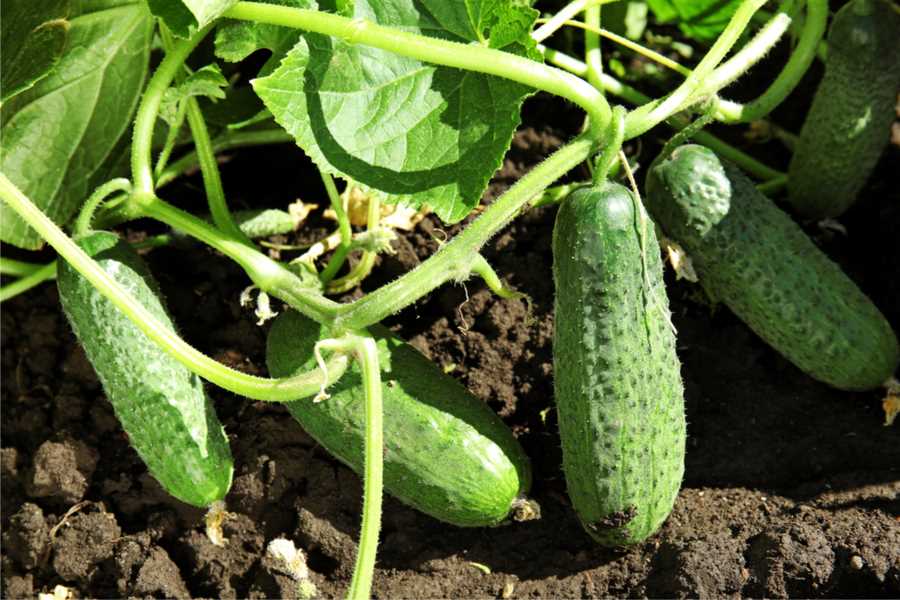
- Identify and remove any yellow or diseased leaves.
- Prune off any branches or runners that are growing too close together or crossing each other.
- Remove any weak or non-productive branches. Focus on keeping the strongest and healthiest ones.
2. Train the Main Stem
- Select a strong and healthy main stem to be the central leader.
- Gently bend the main stem to a horizontal position using soft ties or clips. This helps stimulate side shoot growth.
- Pinch off the top of the main stem once it reaches the desired height, usually around 4-5 feet. This encourages more lateral growth and helps prevent the plant from becoming too tall and unmanageable.
3. Support the Side Shoots
- Use trellises, stakes, or cages to support the side shoots as they grow.
- Regularly train the side shoots to grow vertically along the support structure.
- Prune off any excessive side shoots or suckers that are competing for resources with the main stem.
4. Maintain Proper Spacing
- Ensure that the cucumber plants have enough space between them to allow for proper air circulation and sunlight penetration.
- Avoid overcrowding, as this can lead to the spread of diseases and hinder fruit production.
- Consider using trellises or vertical gardening techniques to maximize space.
5. Water and Fertilize Appropriately
- Provide consistent moisture to cucumber plants, ensuring they receive around 1-2 inches of water per week.
- Avoid overwatering, as this can lead to root rot and other fungal diseases.
- Regularly fertilize the plants with a balanced vegetable fertilizer, following the instructions on the packaging.
By pruning and training cucumber plants, you can maximize fruit production, improve plant health, and extend the fruiting season until frost. Regular maintenance and care will help ensure a bountiful harvest of tasty cucumbers.
Harvest Cucumbers at the Right Time
Knowing when to harvest cucumbers is crucial for ensuring their optimal taste and texture. Here are some tips to help you determine the right time to harvest cucumbers:
1. Size matters
Check the size of the cucumbers. They should reach a mature size before harvesting. This size depends on the cucumber variety, but a common rule of thumb is to wait until they are around 6-8 inches long. Avoid letting them grow too large, as this can result in a bitter taste and tough skin.
2. Color clues
Pay attention to the color of the cucumbers. Most cucumber varieties are harvested when they are still green, but some may turn yellow or orange when ripe. Read the description of the variety you are growing to know which color to look for.
3. Firmness test
Gently squeeze the cucumbers to assess their firmness. Ripe cucumbers should have a firm texture without any soft spots. If they feel mushy or give in to pressure, they are overripe and should be discarded.
4. Harvest frequency
Harvest cucumbers frequently to encourage continuous fruit production. Removing ripe cucumbers from the vines signals the plant to produce more. Aim to harvest every couple of days during the peak harvest season.
5. Use sharp scissors or pruners
When harvesting cucumbers, use sharp scissors or pruners to cut the stem cleanly just above the fruit. Avoid twisting or pulling the cucumbers, as this can damage the vines or break off the fruit prematurely.
6. Cool storage
After harvesting, store the cucumbers in a cool location, preferably between 45-55°F (7-13°C). This helps to extend their shelf life and maintain their freshness.
By following these guidelines, you can ensure that you harvest your cucumbers at the right time, resulting in delicious and high-quality fruits.







